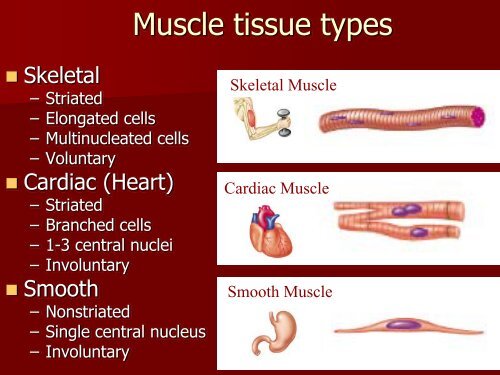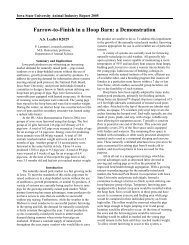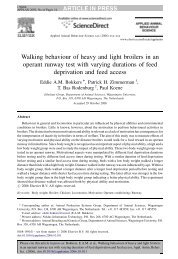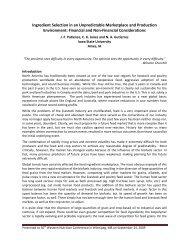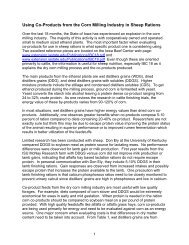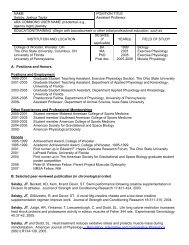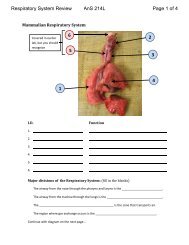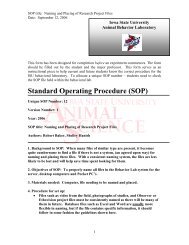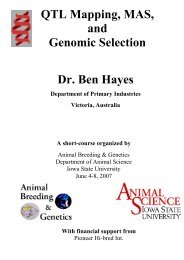Muscle tissue types - Department of Animal Science
Muscle tissue types - Department of Animal Science
Muscle tissue types - Department of Animal Science
- No tags were found...
Create successful ePaper yourself
Turn your PDF publications into a flip-book with our unique Google optimized e-Paper software.
<strong>Muscle</strong> <strong>tissue</strong> <strong>types</strong>• Skeletal– Striated– Elongated cells– Multinucleated cells– Voluntary• Cardiac (Heart)– Striated– Branched cells– 1-3 central nuclei– Involuntary• Smooth– Nonstriated– Single central nucleus– InvoluntarySkeletal <strong>Muscle</strong>Cardiac <strong>Muscle</strong>Smooth <strong>Muscle</strong>
Light Micrograph <strong>of</strong> Skeletal <strong>Muscle</strong>
Electron Micrograph <strong>of</strong> Skeletal <strong>Muscle</strong>From: http://www.siumed.edu/~dking2/ssb/EM007b.htm
Light Micrograph <strong>of</strong> Cardiac <strong>Muscle</strong>From Dr. Gwen Childs, <strong>Department</strong> <strong>of</strong> Anatomy and Neurobiology, University <strong>of</strong>Arkansas for Medical <strong>Science</strong>s, taken from Cytochemistry.net, athttp://www.cytochemistry.net/microanatomy/muscle/striated_cardiac_muscle.htm
Cardiac <strong>Muscle</strong> StructureLight micrograph <strong>of</strong> mammalian cardiac muscle,showing individual cells and centrally located nuclei
Electron Micrograph <strong>of</strong> Cardiac <strong>Muscle</strong>From U.C. Davis Medical Histology Website
Smooth <strong>Muscle</strong>• H&E Stained muscularisexterna = muscle layer<strong>of</strong> intestine• Spindle-shaped, mononucleatedcells– 5-10 μm in diameter– 30-200 μm long• Centrally-located nucleiFrom the Boston UniversityHistology Learning System, at:http://www.bu.edu/histology/m/index.htm
EM <strong>of</strong> Smooth <strong>Muscle</strong>From the Boston University Histology Learning System, at:http://www.bu.edu/histology/m/index.htm
Structure <strong>of</strong> arteries vs. veins
• ContinuousTypes <strong>of</strong> capillaries– Endothelial cell layeris continuous– In most <strong>tissue</strong>s,e.g., brain, muscle• Fenestrated– Holes or filtration pores inendothelial layer– In <strong>tissue</strong>s that do rapidabsorption or filtration, e.g.kidney, small intestine,endocrine glands


